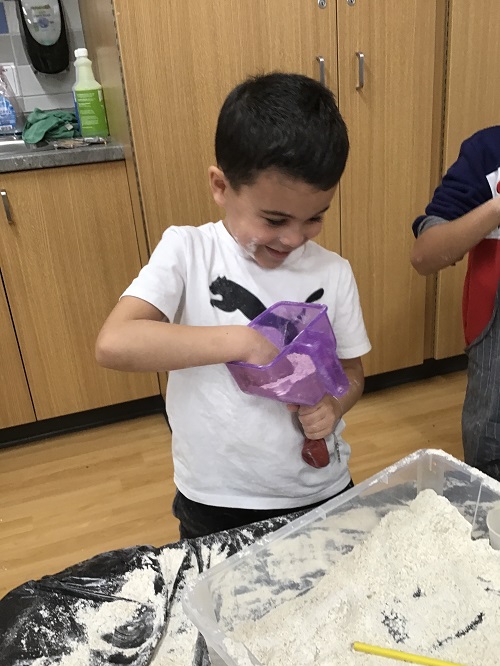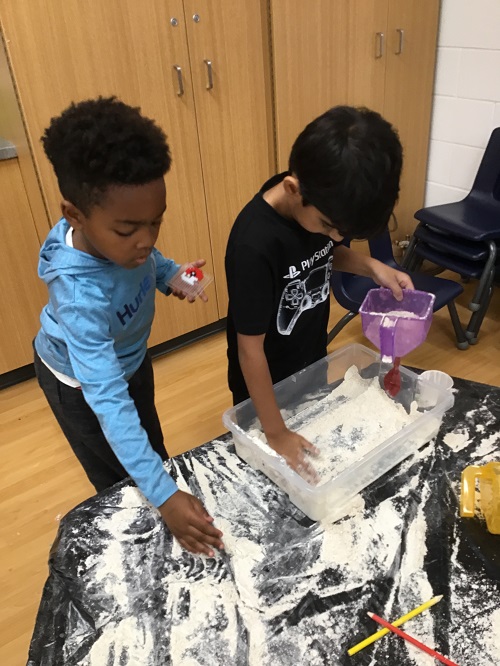This month, the children in School Age 2 have been participating in gross motor activities involving balloons. Adain suggested using balloons to make stress balls, saying, “We can put sand in the balloon to make a stress ball.” The other children agreed. To align with the children's interests, one day I brought flour, funnels, and balloons to make stress balls. The children were encouraged to use funnels to fill the balloons with flour and a pencil to help the flour fall into the funnel.
Parker was the first to figure out how to make it work. “You have to shake the funnel, and it will work,” he declared. The other children followed his instructions and began shaking their funnels. “It's working! You're right. Just shake it!” exclaimed Salma. Adain still didn't think it worked well. He dumped all the flour out of his funnel and scooped a little bit there. He came up with a great point: “Don't put too much. Put a little bit at a time,” he suggested.
Gabriel seemed confused and asked if someone could help him. “I can help you,” Parker said. He took over the balloon and funnel from Gabriel's hands, tying the balloon to the bottom of the funnel and scooping flour into it. Parker then shook the funnel, using the pencil to poke it through the funnel. “See, just stir it and shake it. Here, you try it,” Parker said to Gabriel and gave him the pencil. Gabriel took the pencil and began stirring.
Jay was eager to help Gabriel as well. He showed Gabriel how to hold the funnel and the balloon properly. “Here, Gabriel, dump it first, just get a little scoop,” Jay said. “If that funnel doesn't work, just try another one.” Finally, Gabriel's stress ball was done! He was so excited and thanked the friends who helped him. Also, at the other table, Salma was willing to help Chloe and Anabel as well!
The activity provided a hands-on, interactive experience that not only engaged the children physically but also promoted social and cognitive development. The children worked together to come up with the idea of making stress balls using balloons. They collaborated to fill the balloons with flour and shared their experiences and insights with each other. When some children encountered challenges with the process, such as Adain feeling that it didn't work well, they engaged in problem-solving. Adain suggested not putting too much flour at a time, demonstrating a trial-and-error approach to problem-solving. Parker provided instructions on how to make the stress balls, and the other children followed his lead. This demonstrates their ability to listen, follow instructions, and learn from each other.
The children demonstrated a willingness to help each other. Parker, Jay, and Salma offered assistance and guidance to those who needed help, fostering a supportive and cooperative environment. Gabriel expressed gratitude towards his friends who helped him complete his stress ball. This reflects an understanding of the value of teamwork and acknowledgment of others' contributions.
Also, the activity involved using small tools such as funnels, balloons, and pencils. The children practiced fine motor skills by manipulating these objects, pouring flour, and using the pencil to stir and poke the flour in the funnels. Besides, the children exhibited persistence and patience as they worked through the activity. For example, when Adain wasn't satisfied initially, he adjusted his approach, and the others patiently followed Parker's instructions until they achieved success.
At the end of that day the children were eager to explore throwing the stress ball. Therefore, the future activity bringing to the program would be a stress ball throwing competition outside.











